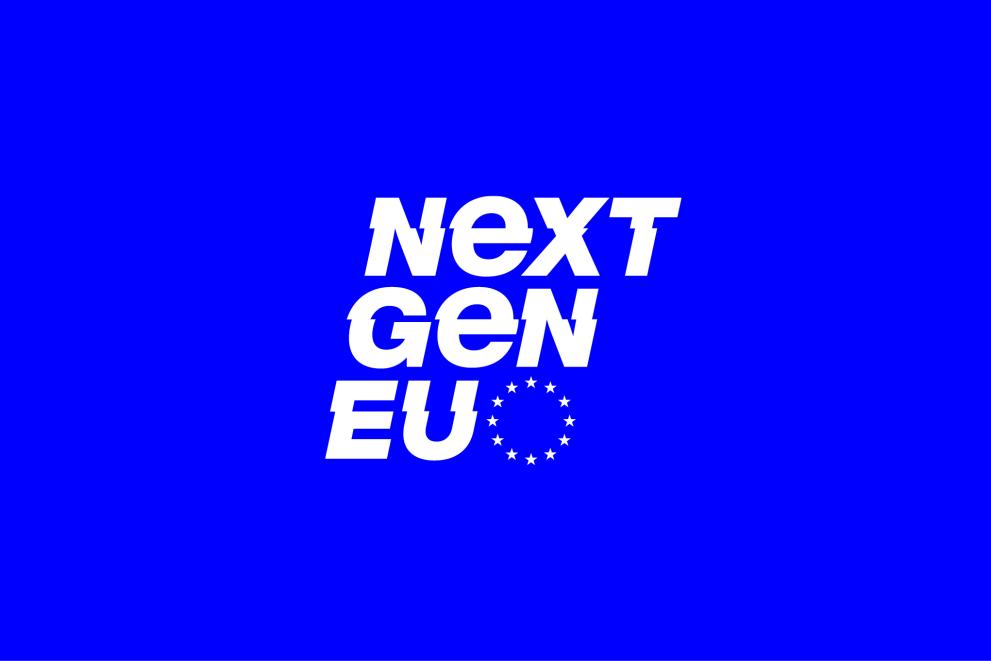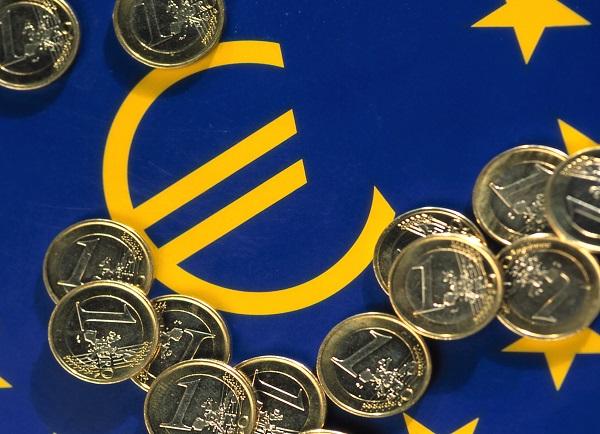Introduction

This is NextGenerationEU. This is more than a recovery plan. It is a once in a lifetime chance to emerge stronger from the pandemic, transform our economies, create opportunities and jobs for the Europe where we want to live. We have everything to make this happen.
We have the vision, we have the plan, and we have agreed to invest together €806.9 billion*.
It is now time to get to work, to make Europe greener, more digital and more resilient.
*This figure is in current prices. It amounts to €750 billion in 2018 prices.
The largest stimulus package ever
The EU’s long-term budget, coupled with NextGenerationEU (NGEU), the temporary instrument designed to boost the recovery, form the largest stimulus package ever financed in Europe. A total of €2.018 trillion in current prices* are helping rebuild a post-COVID-19 Europe. It will be a greener, more digital and more resilient Europe.
The funds are being used to address the most important challenges before Europe and support those in need. In the aftermath of Russia’s aggression on Ukraine, the EU budget was mobilised to provide emergency assistance and support, in Ukraine and in the EU countries, and to alleviate the humanitarian consequences of the war.
*€1.8 trillion in 2018 prices
Main elements of the package
More than 50% of the long-term budget and NextGenerationEU are supporting modernisation, for example through:

research and innovation, via Horizon Europe

fair climate and digital transitions, via the Just Transition Fund and the Digital Europe Programme

preparedness, recovery and resilience, via the Recovery and Resilience Facility, rescEU and a new health programme, EU4Health

modernising traditional policies such as cohesion and the common agricultural policy, to maximise their contribution to the Union's priorities

fighting climate change, with 30% of the EU funds, the highest share ever of the European budget

biodiversity protection and gender equality
Multiannual Financial Framework 2021-2027 and NextGenerationEU total allocations per heading
| Heading | MFF | NextGenerationEU |
|---|---|---|
| 1. Single market, innovation and digital | €149.5 billion | €11.5 billion |
| 2. Cohesion, resilience and values | €426.7 billion | €776.5 billion |
| 3. Natural resources and environment | €401 billion | €18.9 billion |
| 4. Migration and border management | €25.7 billion | - |
| 5. Security and defence | €14.9 billion | - |
| 6. Neighborhood and the world | €110.6 billion | - |
| 7. European public administration | €82.5 billion | - |
| TOTAL MFF | €1 210.9 billion | €806.9 billion |
All amounts in € in current prices. Source: European Commission

NextGenerationEU is a more than €800 billion temporary recovery instrument to help repair the immediate economic and social damage brought about by the coronavirus pandemic. Post-COVID-19 Europe will be greener, more digital, more resilient and better fit for the current and forthcoming challenges.
The centrepiece of NextGenerationEU is the Recovery and Resilience Facility (RRF) – an instrument for providing grants and loans to support reforms and investments in the EU Member States at a total value of €723.8 billion. To receive funds under the Recovery and Resilience Facility, Member States need to prepare Recovery and Resilience Plans outlining how they are going to invest the funds. Moreover, they need to fulfil the relevant milestones and targets, and before any disbursements under the RRF can flow, the Commission assesses the satisfactory fulfilment of each milestone and target.
To consult the plans of different EU Member States and track the disbursements made to date, check the interactive Recovery and Resilience Scoreboard.
The rest of the funds from NextGenerationEU are being disbursed to EU Member States by several EU programmes: the Recovery Assistance for Cohesion and the Territories of Europe (REACT-EU), Horizon Europe, InvestEU, European Agricultural Fund for Rural Development or the Just Transition Fund (JTF).
Following Russia’s aggression on Ukraine, EU Member States could use some of these funds to address the needs of the refugees arriving to their territories.
NextGenerationEU breakdown
|
Recovery and resilience facility (RRF) |
€723.8 billion |
|---|---|
| of which, loans | €385.8 billion |
| of which, grants | €338 billion |
|
Programme |
Funding |
|---|---|
| ReactEU | €50.6 billion |
| Horizon Europe | €5.4 billion |
| InvestEU | €6.1 billion |
| Rural Development | €8.1 billion |
| Just Transition Fund (JTF) | €10.9 billion |
| RescEU | €2 billion |
| TOTAL | €806.9 billion |
All amounts in €, in current prices. Source: European Commission
National allocations
The EU budget is not and has never been about giving and taking. All Member States benefit from being part of the single market, addressing together the common challenges. EU funds, for instance under the cohesion funds or Horizon Europe, go to all corners of the EU.
In certain policy areas Member States received pre-assigned amounts. You can consult them here.
Financing the EU long-term budget and NextGenerationEU

The EU long-term budget will continue to be financed through the well-known revenue sources of the EU budget:
- customs duties
- contributions from the Member States based on value added tax (VAT)
- contributions based on gross national income (GNI)
In addition, as of 1 January 2021, a new national contribution based on non-recycled plastic packaging waste will be introduced as a source of revenue of the EU budget.
Borrowing to finance the recovery
To finance NextGenerationEU, the European Commission - on behalf of the European Union – is borrowing on the markets at more favourable rates than most Member States and redistributes the amounts.
Before NextGenerationEU, the European Commission already issued bonds, for instance to finance loans to EU Member States and third countries, including up to €100 billion for the SURE programme to support jobs and keep people in work during the COVID-19 pandemic.
The European Union will raise up to around €800 billion in current prices until 2026 for NextGenerationEU through a diversified funding strategy.
A clear roadmap towards new sources of revenue to help repay the borrowing
In the interinstitutional agreement from December 2021, the European Parliament, the Council and the Commission agreed to work towards introducing sufficient new own resources to cover the repayments of NextGenerationEU.
In December 2021, the Commission thus proposed three new sources of revenue to the EU budget, to help repay the grants part of NextGenerationEU. This proposal would also contribute to the financing of the Social Climate Fund, aimed to make sure the transition to a decarbonised economy leaves no one behind.
On 20 June 2023, the Commission completed its proposal for a next generation of own resources. The final package includes a new temporary statistical own resource based on company profits. Following the political agreement on the Fit For 55 package, which seeks to make sure EU policies contribute to the climate neutrality of our continent, the Commission has also adjusted the own resources proposals based on the Emissions Trading System (ETS) and Carbon Border Adjustment Mechanism (CBAM) compared to the original proposals from December 2021.

Emissions Trading System own resource

Carbon border adjustment mechanism own resource

Temporary statistical based own resource on company profits.
In addition, the own resource based on the share of residual profits from multinationals that will be re-allocated to EU Member States under the OECD/G20 agreement on a re-allocation of taxing rights (“Pillar One”) is maintained. The Commission is working with the European Parliament and with the EU Member States in the Council towards a swift approval of the new sources of revenue.
The beneficiaries
Anyone can benefit from the EU budget. Find open and upcoming calls for funding proposals, get background information on funding processes and programmes, and apply online.
Learn about the tendering process and opportunities for doing business with the European Commission.
Background
The Commission put forward its proposal for the EU’s next long-term budget on 2 May 2018.
On 27 May 2020, in response to the unprecedented crisis caused by the coronavirus, the European Commission proposed the temporary recovery instrument NextGenerationEU, as well as targeted reinforcements to the long-term EU budget for 2021-2027.
On 21 July 2020, less than two months later, EU heads of state or government reached a political agreement on the package.
The final adoption by the Council took place on 17 December 2020.
Documents
- Downloadбългарски(5.95 KB - HTML)
- Downloadespañol(5.95 KB - HTML)
- Downloadčeština(5.95 KB - HTML)
- Downloaddansk(5.95 KB - HTML)
- DownloadDeutsch(5.95 KB - HTML)
- Downloadeesti(5.95 KB - HTML)
- Downloadελληνικά(5.95 KB - HTML)
- Downloadfrançais(5.95 KB - HTML)
- Downloadhrvatski(5.95 KB - HTML)
- Downloaditaliano(5.95 KB - HTML)
- Downloadlatviešu(5.95 KB - HTML)
- Downloadlietuvių(5.95 KB - HTML)
- Downloadmagyar(5.95 KB - HTML)
- DownloadMalti(5.95 KB - HTML)
- DownloadNederlands(5.95 KB - HTML)
- Downloadpolski(5.95 KB - HTML)
- Downloadromână(5.95 KB - HTML)
- Downloadslovenčina(5.95 KB - HTML)
- Downloadslovenščina(5.95 KB - HTML)
- Downloadsuomi(5.95 KB - HTML)
- Downloadsvenska(5.95 KB - HTML)
- Downloadбългарски(130.13 KB - HTML)
- Downloadespañol(198.88 KB - HTML)
- Downloadčeština(193.71 KB - HTML)
- Downloaddansk(192.25 KB - HTML)
- DownloadDeutsch(202.37 KB - HTML)
- Downloadeesti(187.53 KB - HTML)
- Downloadελληνικά(251.55 KB - HTML)
- Downloadfrançais(203.22 KB - HTML)
- Downloadhrvatski(187.76 KB - HTML)
- Downloaditaliano(196.7 KB - HTML)
- Downloadlatviešu(193.32 KB - HTML)
- Downloadlietuvių(193.19 KB - HTML)
- Downloadmagyar(202.4 KB - HTML)
- DownloadMalti(194.68 KB - HTML)
- DownloadNederlands(195.79 KB - HTML)
- Downloadpolski(199.4 KB - HTML)
- Downloadportuguês(197.76 KB - HTML)
- Downloadromână(200.08 KB - HTML)
- Downloadslovenčina(195.02 KB - HTML)
- Downloadslovenščina(188.28 KB - HTML)
- Downloadsuomi(194.34 KB - HTML)
- Downloadsvenska(192.6 KB - HTML)
- Downloadбългарски(352.85 KB - HTML)
- Downloadespañol(271.43 KB - HTML)
- Downloadčeština(264.71 KB - HTML)
- Downloaddansk(264.63 KB - HTML)
- DownloadDeutsch(274.84 KB - HTML)
- Downloadeesti(259.17 KB - HTML)
- Downloadελληνικά(359.9 KB - HTML)
- Downloadfrançais(278.35 KB - HTML)
- Downloadhrvatski(261.24 KB - HTML)
- Downloaditaliano(268.16 KB - HTML)
- Downloadlatviešu(269.8 KB - HTML)
- Downloadlietuvių(266.32 KB - HTML)
- Downloadmagyar(283.57 KB - HTML)
- DownloadMalti(267.54 KB - HTML)
- DownloadNederlands(271.63 KB - HTML)
- Downloadpolski(271.56 KB - HTML)
- Downloadportuguês(274.84 KB - HTML)
- Downloadromână(278.69 KB - HTML)
- Downloadslovenčina(267.79 KB - HTML)
- Downloadslovenščina(256.31 KB - HTML)
- Downloadsuomi(269.34 KB - HTML)
- Downloadsvenska(262.73 KB - HTML)
- Downloadбългарски(300.99 KB - HTML)
- Downloadespañol(252.58 KB - HTML)
- Downloadčeština(246.51 KB - HTML)
- Downloaddansk(244.46 KB - HTML)
- DownloadDeutsch(251.13 KB - HTML)
- Downloadeesti(243.26 KB - HTML)
- Downloadελληνικά(296.6 KB - HTML)
- Downloadfrançais(255.95 KB - HTML)
- DownloadGaeilge(241.49 KB - HTML)
- Downloadhrvatski(248.85 KB - HTML)
- Downloaditaliano(252.5 KB - HTML)
- Downloadlatviešu(249.62 KB - HTML)
- Downloadlietuvių(250.34 KB - HTML)
- Downloadmagyar(257.22 KB - HTML)
- DownloadMalti(251.52 KB - HTML)
- DownloadNederlands(250.19 KB - HTML)
- Downloadpolski(253.31 KB - HTML)
- Downloadportuguês(251.69 KB - HTML)
- Downloadromână(255.7 KB - HTML)
- Downloadslovenčina(249.4 KB - HTML)
- Downloadslovenščina(245.02 KB - HTML)
- Downloadsuomi(246.63 KB - HTML)
- Downloadsvenska(248.77 KB - HTML)
